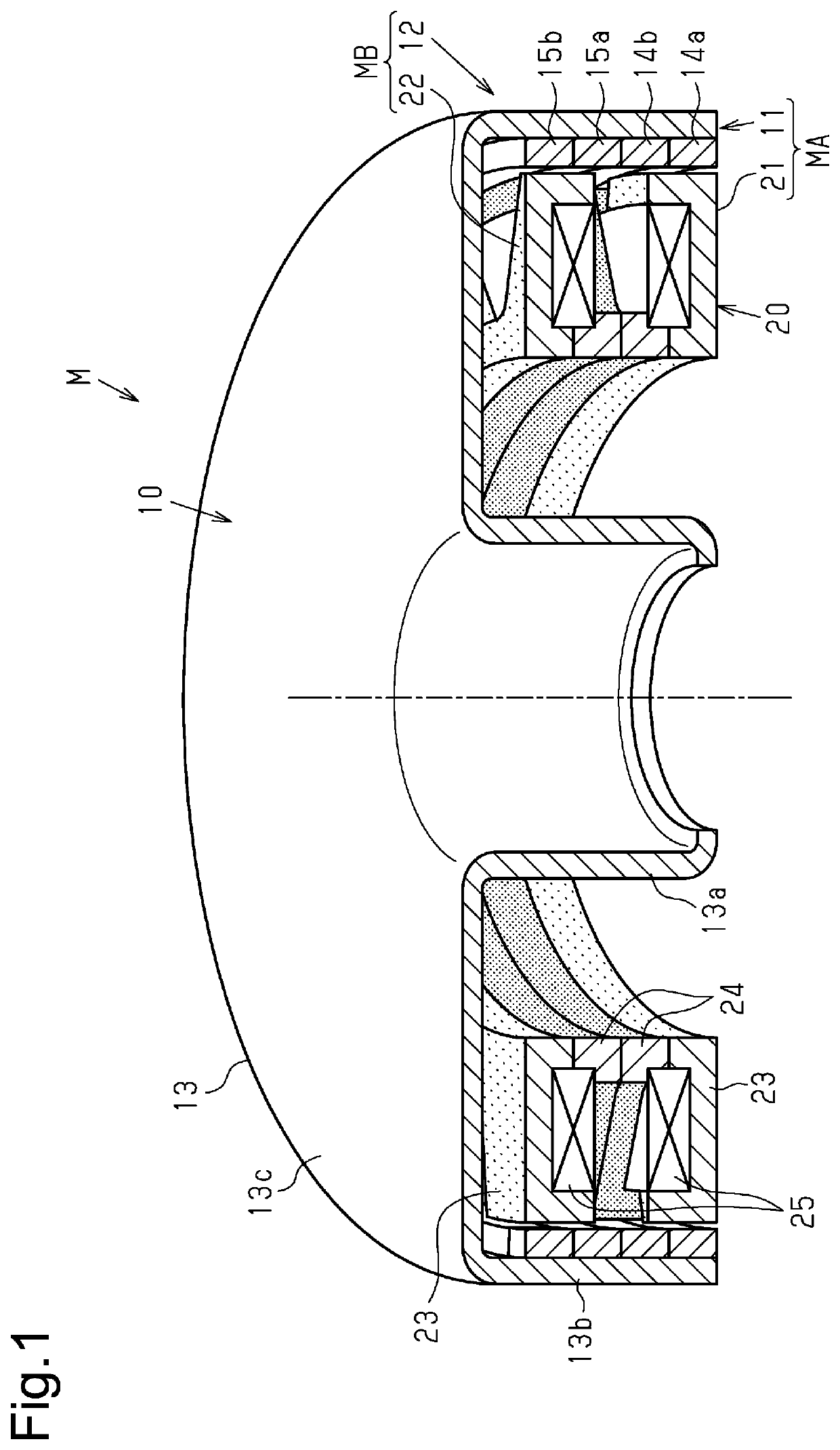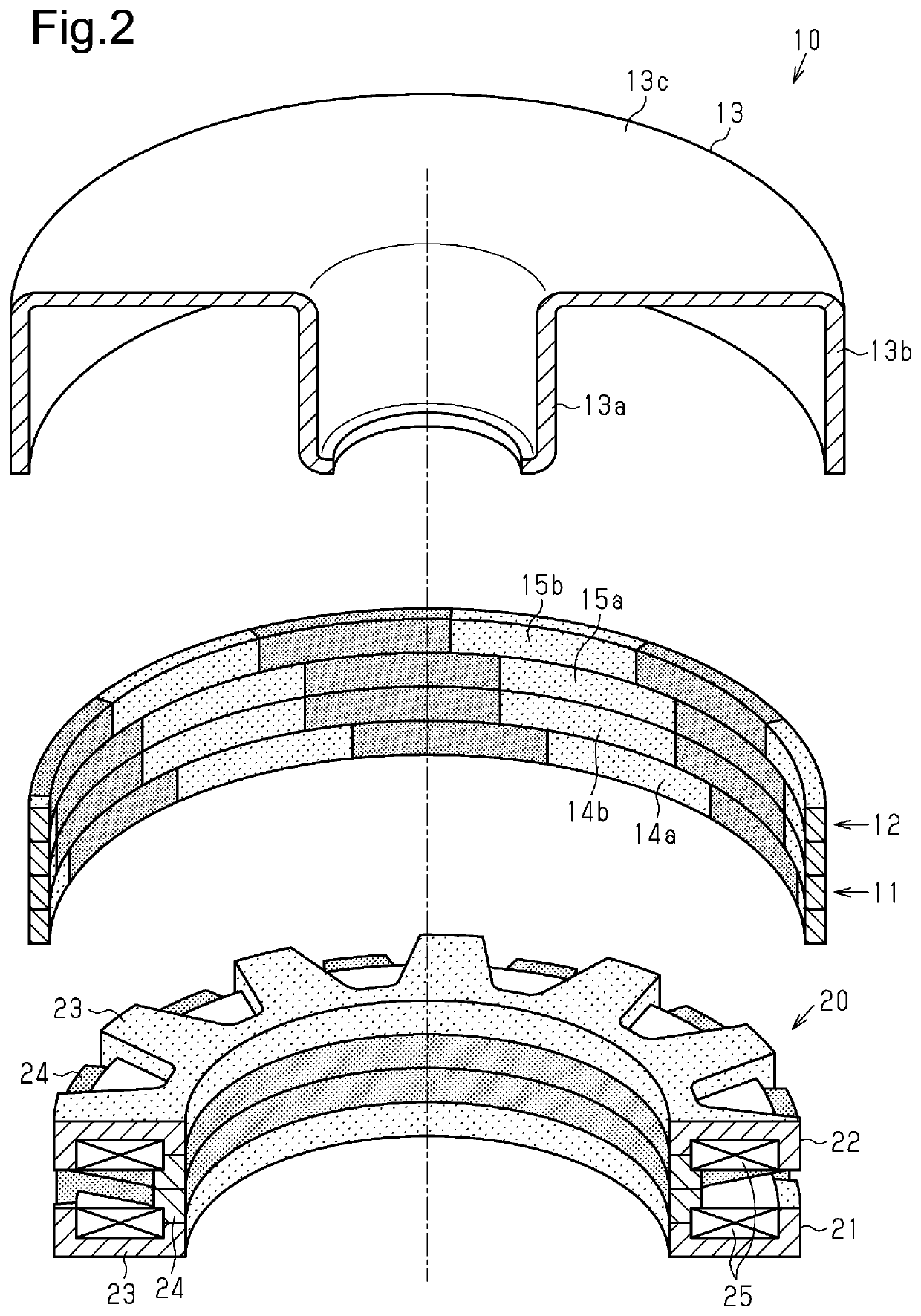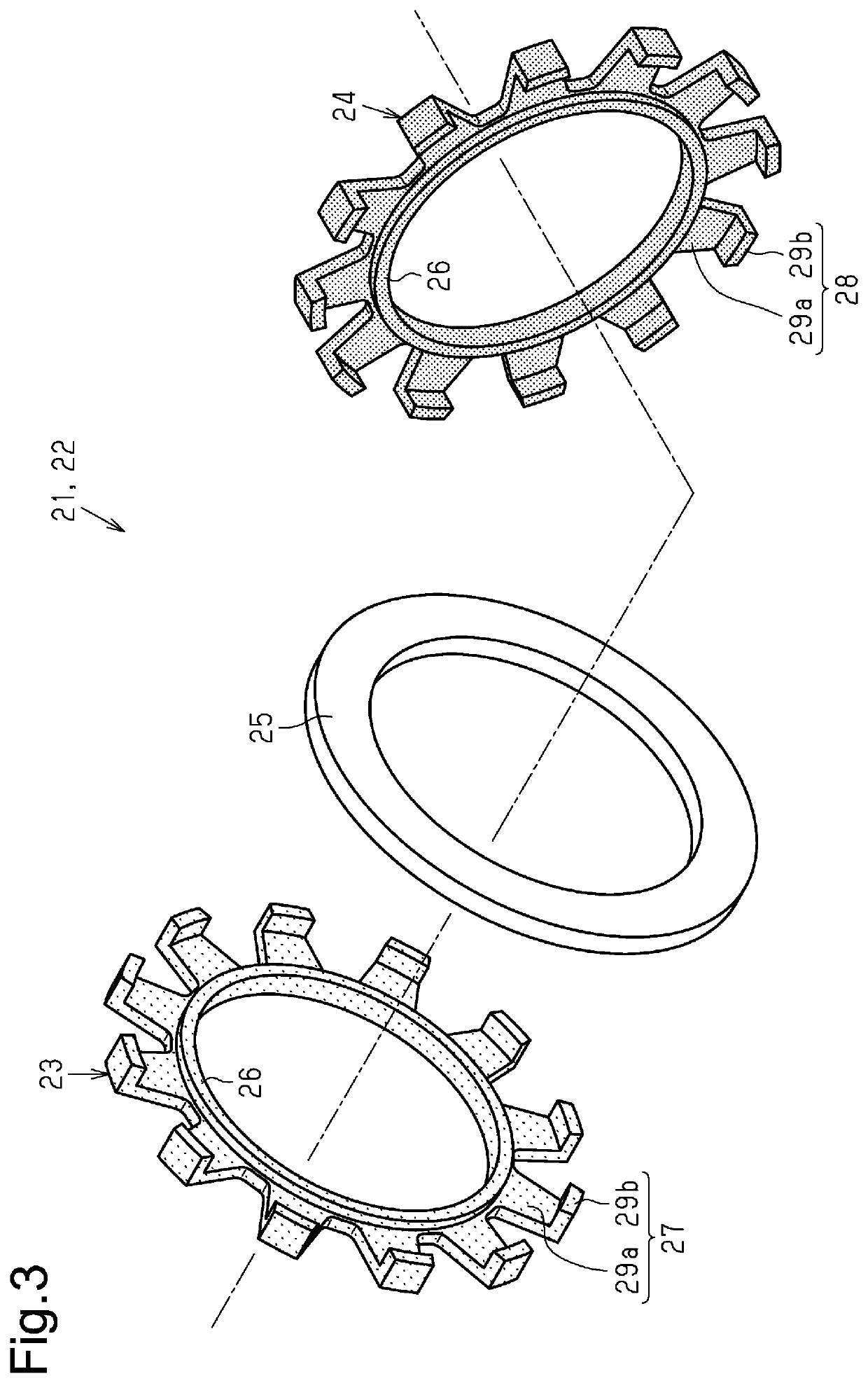Motor control device and motor system
- Summary
- Abstract
- Description
- Claims
- Application Information
AI Technical Summary
Benefits of technology
Problems solved by technology
Method used
Image
Examples
Example
First Comparative Example
[0054]The first comparative example in which the A-phase drive current Ia and the B-phase drive current Ib are the sinusoidal fundamental wave currents will now be described with reference to FIGS. 7A and 7D. The A-phase motor portion MA and the B-phase motor portion MB, which form the motor M of the control subject, are configured to have a phase difference of 90 degrees in electrical angle. Accordingly, the phase difference of the A-phase drive current Ia and the B-phase drive current Ib in the first comparative example is generally set to 90 degrees.
[0055]The current waveforms shown in FIG. 7A indicate that when the A-phase drive current Ia and the B-phase drive current Ib are the sinusoidal fundamental wave currents, the phase difference is 90 degrees. As shown in FIG. 7B, in a frequency analysis of the current waveforms using a Fourier transform (current FFT), the A-phase drive current Ia and the B-phase drive current Ib are the fundamental wave current...
Example
Second Comparative Example
[0064]A second comparative example in which the A-phase drive current Ia and the B-phase drive current Ib are the sinusoidal fundamental wave currents (no superimposition of high-order harmonic current) and the phase difference is set to 82 degrees, which is smaller than 90 degrees, will now be described with reference to FIGS. 8A to 8D.
[0065]As described above, the A-phase motor portion MA and the B-phase motor portion MB that form the motor M, which is subject to control, have a phase difference of 90 degrees in electrical angle in terms of the structure. Thus, the phase difference of the A-phase drive current Ia and the B-phase drive current Ib is generally 90 degrees in electrical angle. Further, the present embodiment employs a structure in which the second stator cores 24 of the A-phase stator portion 21 and the B-phase stator portion 22 forming the A-phase motor portion MA and the B-phase motor portion MB are in contact with each other to reduce the ...
PUM
 Login to View More
Login to View More Abstract
Description
Claims
Application Information
 Login to View More
Login to View More - R&D
- Intellectual Property
- Life Sciences
- Materials
- Tech Scout
- Unparalleled Data Quality
- Higher Quality Content
- 60% Fewer Hallucinations
Browse by: Latest US Patents, China's latest patents, Technical Efficacy Thesaurus, Application Domain, Technology Topic, Popular Technical Reports.
© 2025 PatSnap. All rights reserved.Legal|Privacy policy|Modern Slavery Act Transparency Statement|Sitemap|About US| Contact US: help@patsnap.com



